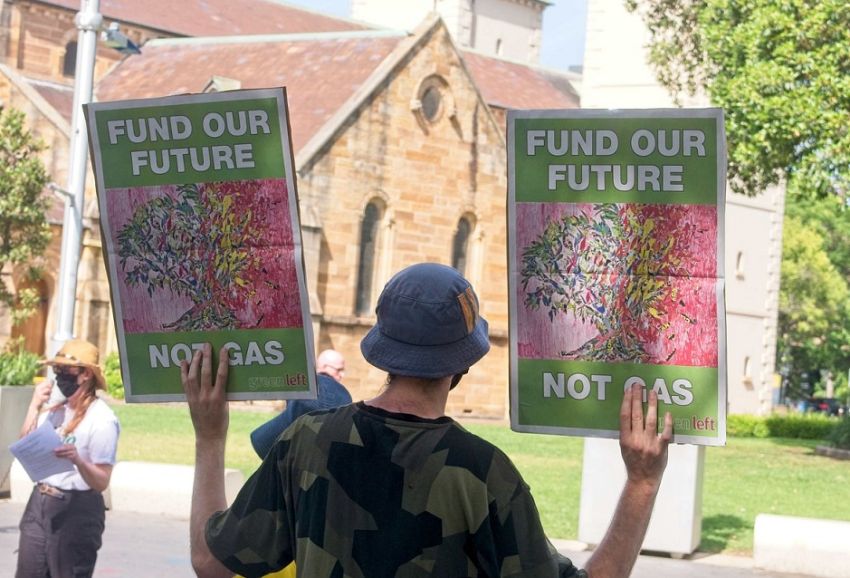
Dick Nichols, Green Left’s Barcelona-based European correspondent, recalls the birth of this unique publication: “Thirty years have passed, but I still remember the intense discussions about what to call the new radical paper the Democratic Socialist Party took the lead in initiating — right when Francis Fukuyama was announcing that history had ended with the fall of the Berlin Wall and the implosion of the Soviet Union.
“After much canvassing of ‘imaginative’ mastheads that did not really convince, someone said: ‘Look, what will it be, basically? It will be green, it will be left and it will be weekly.’
“That matter-of-fact remark produced the masthead of what has become the longest-lasting red-and-green paper in the English-speaking world.
“It has survived and flourished for two basic reasons: its coverage of all popular struggles in the perspective of the most critical struggle of all — that for human survival — and the skills and unrelenting dedication of its workers, never to be underestimated.
“How many struggles for people’s rights and for a decent future would go unreported were it not for GL?
“The abuse the paper regularly receives from eminent nobodies in the Australian media and politics is proof that it keeps hitting the mark, and a badge to be worn with pride.
“May Green Left live another 30 years, and those on a planet its stubborn effort helps save from environmental cataclysm.”
Pat Brewer, a veteran feminist and socialist activist remembers a discussion about the need for a new progressive broad paper at the 1990 Socialist Scholars Conference in Sydney.
“There were many international guests and the conference drew an overall attendance of about 1400. One major discussion addressed the need for a new broad paper for the left — rather than a party paper — a red-green publication.”
When Green Left was first issued in February 1991, Brewer said, it sought to address some three decades of experiences the 1960s social movements had spawned. Today, GL has helped record and make sense of another 30 years of struggles.
Pip Hinman, one of the current editors, was also present at the beginning. “I was a part of the newspaper Direct Action and we thought it was time to broaden the discussion about the way forward.
“For us, the name ‘Green Left’ encapsulated where the movement needed to go. The green side of the movement had to speak more with the left side of the movement, and break out of its bubble, and vice-versa.
“We wanted a new paper that wasn’t simply another ‘party paper,’ but which nevertheless could cohere a core of dedicated contributors and supporters. We wanted to involve more people than those who were already a part of the organised left.
Editor Susan Price still has her original Green Left share certificate — a source of pride.
“What happened in Eastern Europe at the end of the 1980s had given the left a kind of collective depression. But Green parties were also on the rise around the world and new movements were forming around ecology. That had its resonance in Australia too.
“GL was launched before the Australian Greens were formed. Local rainbow experiments were happening, including alliances among ecological, humanistic, social justice and left activists looking for a new way forward. That search continues today.
“GL wanted to relate to these new movements, and to break through what was a very concentrated mainstream media. You didn’t have a widespread use of the internet (although GL put all its articles online, without a paywall, from its first issue) and there was no social media.
“News was very filtered through the capitalist press, so we played an important role as the voice of the unheard.”
Hinman adds that the rise of digital media means that everyone now is a potential journalist.
“But we still need to train activists to be able to filter real and fake news today. It can be very confusing. We aim to train reporters to check facts, analyse developments and report clearly.
“We are also developing GL’s podcasting — a progression from our longstanding radio program on Community Radio 3CR in Melbourne.
“We have just started a weekly discussion show on YouTube and podcasting platforms. The first episode with three powerful women First Nations activists was launched just before Invasion Day.”
Price said she hopes “podcasts will better connect us with a new generation increasingly using this media platform for their information and analysis.
“Every week we receive articles from people who find GL and like what they see,” she said. “We like that, and appreciate the photos, video, cartoons and illustrations that are sent in too.
“Sharing GL with your networks also helps us, as we don’t have the big bucks for advertising. We rely on people becoming supporters, and making a regular donation.
“The GL project has always been about building the social movements — not just in Australia, but internationally. Ultimately, that’s the only solution for a world in crisis.”